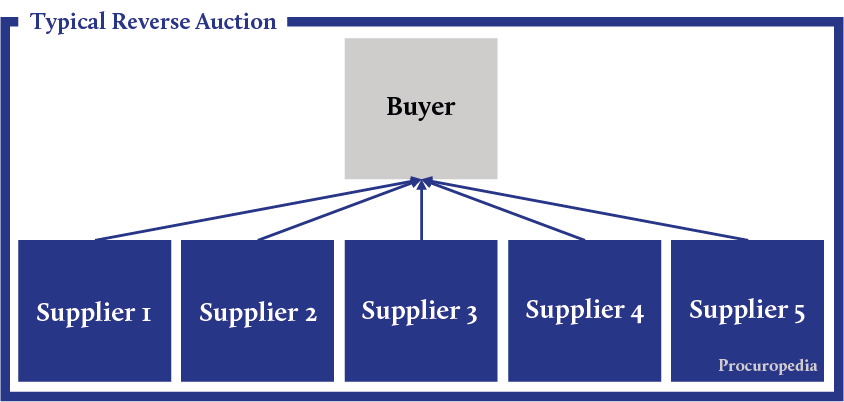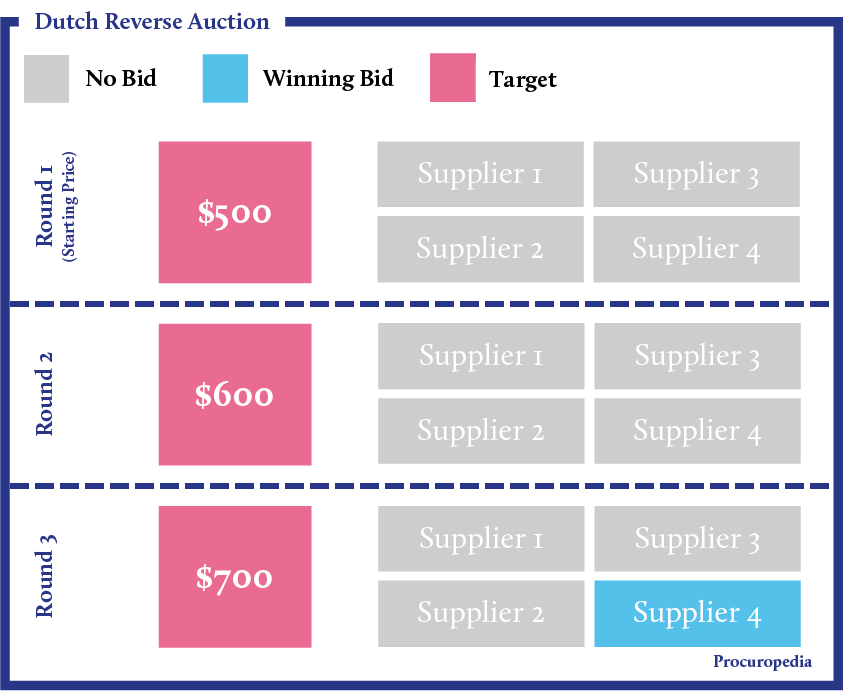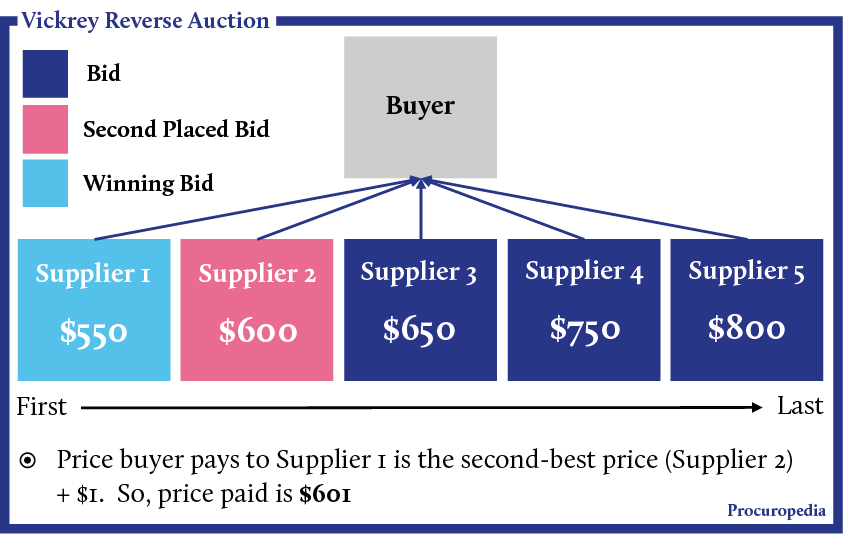Definition
Reverse auctions, digitally referred to as eAuctions, are where suppliers bid to fulfill a buyer’s requirement of goods or services. Unlike forward auctions, where buyers compete and bids keep increasing, reverse auctions have suppliers competing amongst themselves. In most cases, bidding starts from the highest price and the lowest overall bid wins.
Need more help? Have a request? Please drop us a line...









